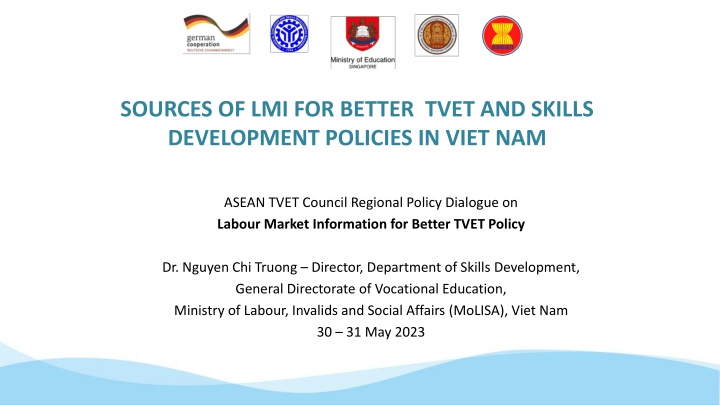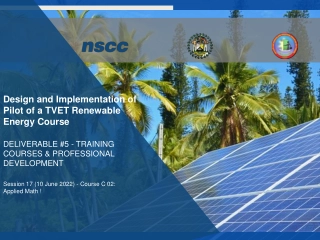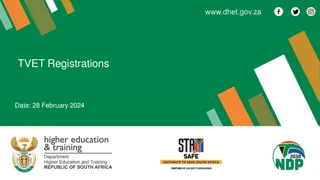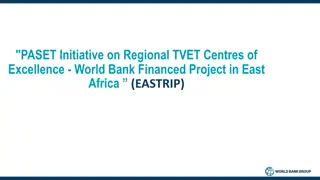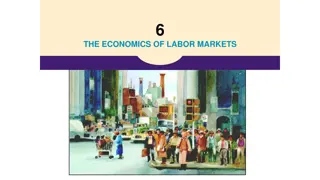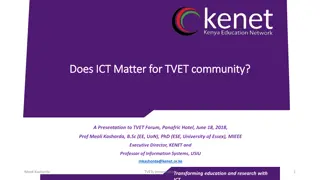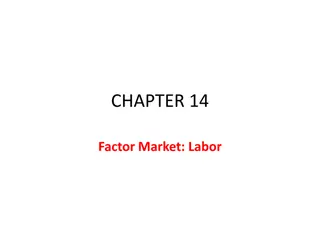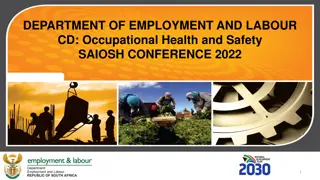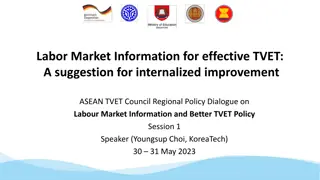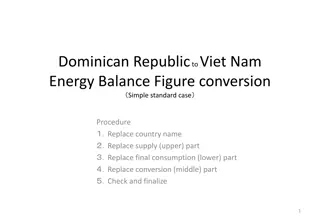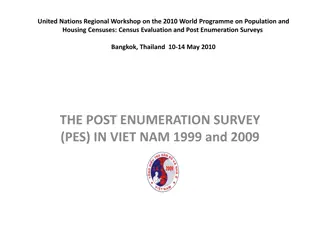Sources of Labor Market Information for TVET and Skills Development in Viet Nam
The various sources of labor market information (LMI) crucial for developing effective TVET and skills policies in Viet Nam. Discover the advantages, disadvantages, and key challenges associated with utilizing LMI for skills development. Gain insights from experts in the field through the ASEAN TVET Council Regional Policy Dialogue."
Download Presentation

Please find below an Image/Link to download the presentation.
The content on the website is provided AS IS for your information and personal use only. It may not be sold, licensed, or shared on other websites without obtaining consent from the author.If you encounter any issues during the download, it is possible that the publisher has removed the file from their server.
You are allowed to download the files provided on this website for personal or commercial use, subject to the condition that they are used lawfully. All files are the property of their respective owners.
The content on the website is provided AS IS for your information and personal use only. It may not be sold, licensed, or shared on other websites without obtaining consent from the author.
E N D
Presentation Transcript
SOURCES OF LMI FOR BETTER TVET AND SKILLS DEVELOPMENT POLICIES IN VIET NAM ASEAN TVET Council Regional Policy Dialogue on Labour Market Information for Better TVET Policy Dr. Nguyen Chi Truong Director, Department of Skills Development, General Directorate of Vocational Education, Ministry of Labour, Invalids and Social Affairs (MoLISA), Viet Nam 30 31 May 2023
SOURCES OF LABOUR MARKET INFORMATION 1. Population and Housing Census 2. Labor Force Survey 3. Vietnam Household Living Standard Survey 4. Enterprise Survey 5. Thematic sampling surveys: Survey on technological application in enterprises, Survey on labor supply and demand of enterprises, Survey on technology in various types of enterprises, Survey on salary, Survey on labor demand for TVET policies 2
SOURCES OF LABOUR MARKET INFORMATION 6. Administrative data on labor and employment collected from state management agencies (ex. Administrative data collected from TVET institute) 7. Data collected from open sources and internet (ex. Online job vacancy data collected from job platforms; data collected from organizations ILO, WB, etc.) 3
ADVANTAGES More reliable and comprehensive information sources from GSO allow analyzing the overall picture of the current state of labor and employment Data on labor and employment are provided in a timely manner, i.e. the Labor Force Survey data are collected monthly and released quarterly Data on employment allow the calculation and generalization nationwide, by region and by province. They enables to create panel data for analyzing the employment movement by industry and occupation
DISADVANTAGES The timeliness of data is not ensured due to a long time for data collection and processing Data mainly covers enterprises in the formal sector while enterprises in the informal sector, administrative institutes and other organizations are not fully covered Non-repeating survey samples limit policy impact monitoring and assessment Data on labor demand of enterprises are limited. There is no detailed information by qualification, age group, etc.
KEY CHALENGES FOR SKILLS DEVELOPMENT AND USING LMI FOR SKILLS DEVELOPMENT POLICIES 3/17/2025 6
KEY CHALENGES FOR SKILLS DEVELOPMENT Reskills, Upskills and Skilling for people for the jobs that: - Do not exist yet: New jobs arising from the digital transformation, digital government, digital society, digital enterprises, digital human resources, digital workers, and hybrid workers; smart cities, smart solutions, destructive innovations, etc. Arise due to the ongoing Covid 19 pandemic - Use the technologies that are not yet invented: Technological inventions of quantum engines, 5G, 6G bandwidth, etc., and their impacts Narrow skills gap between rural and urban labours, migrant labours: Slow change of perception and habits (qualification-based recruitment and labor force quality assessment, etc.) -
LIMITATIONS OF THE MENTIONED ABOVE SOURCES OF LMI FOR SKILLS DEVELOPMENT Late information in terms of identification of the skills needs, skills gap, skills shortages, therefore late in development of the fit TVET training program and curriculum. Still lack of information of skills needs in terms of each of occupational trades or in each sectors Lack of National indicators of skills for employment (NISE) and therefore different resources, different result of LMI 3/17/2025 8
LIMITATIONS OF THE MENTIONED ABOVE SOURCES OF LMI FOR SKILLS DEVELOPMENT LMI is still not all fit and update with the reality from industries side Technologies is now changes so fast but LMI still behind away from their changes Lack of believable on sources of LMI from industries due to their poor engagement Lack of believable on sources of LMI from TVET Institutions due to their LMI based on the training trade in stead of industries occupational trades 3/17/2025 9
RECOMMENDATIONS FOR IMPROVING LMI SOURCES FOR SKILLS DEVELOPMENT 1. Set up a database and provide LMI with consistent and synchronous indicators on the basis of: List of occupations according to production and business activities, instead of training occupations for each industry to unify LMI indexes and LMI sources National Skills Qualification Framework (skills level, structure of NOSS, Occupation description ) and develop NOSS according to NSQF as a common goal for all stakeholders for the development of NOSS (Government Enterprise Training Institutions) 3/17/2025 10
RECOMMENDATIONS FOR IMPROVING THE SOURCES OF LABOUR MARKET INFORMATION Skills needs, skills shortage, skills gap by skills levels of each occupational trade or job in sectors or industries base on the National Occupational Skills Standards 2. Develop a set of National Indicators of skills for employment and including their indicators in the LMIS 3. Enhance capacity to apply Information Technology, bigdata, AI for the timely, precise and comprehensive LMIS 3/17/2025 11
Thank you for your attention! 3/17/2025 12
